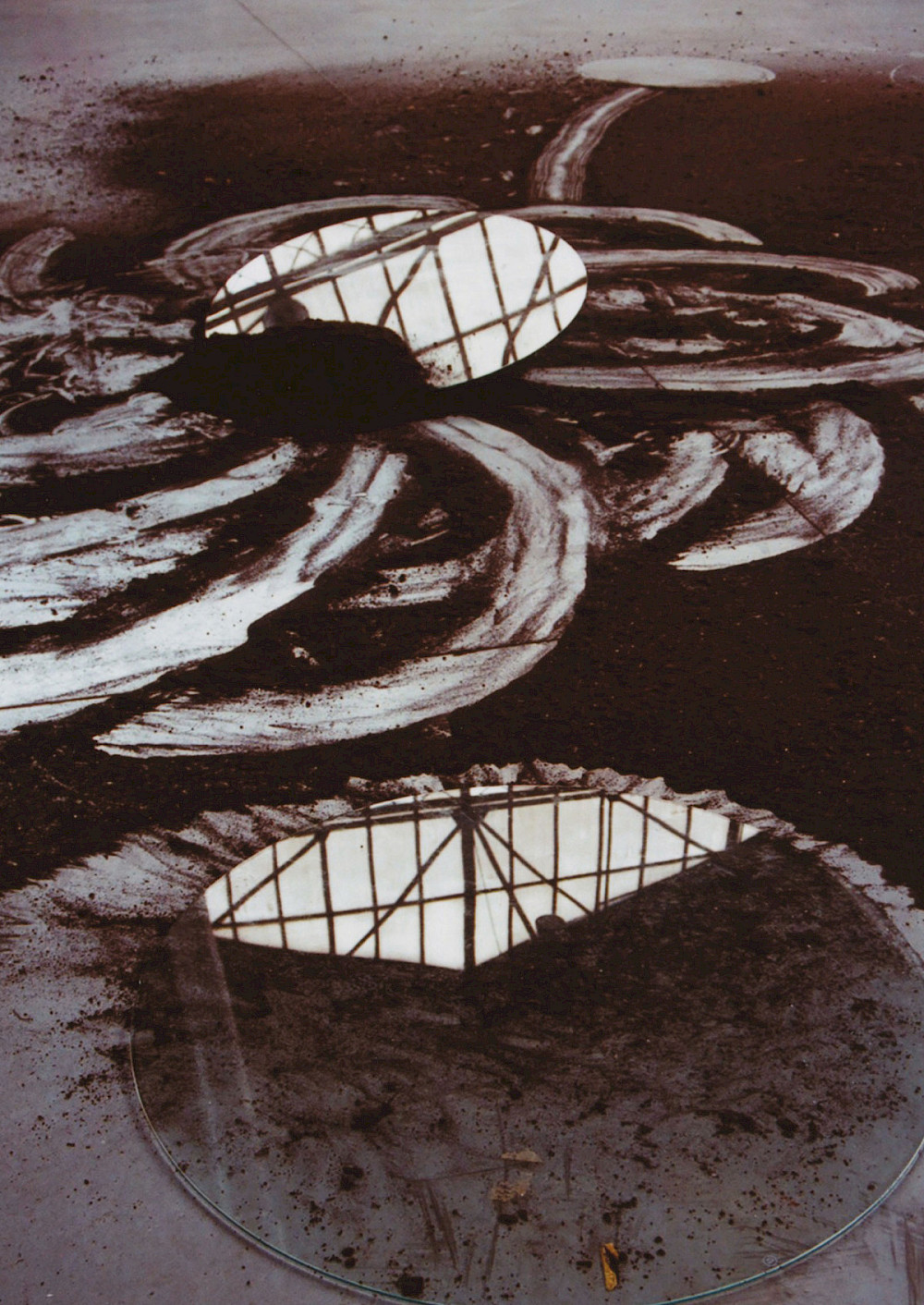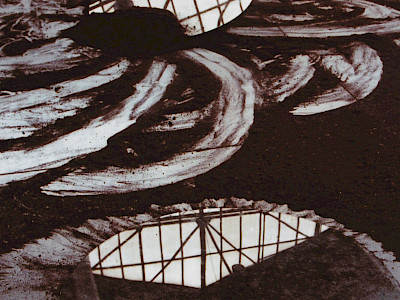14 — 16.05.2014
Gwendoline Robin graduated as a visual artist from La Cambre (Brussels) and has since been carving out an oeuvre situated between sculpture and performance. With the elements of fire, dynamite, glass, and earth, she develops unconstrained, volatile actions that play with fragility and danger. Collaborations with choreographers Pierre Droulers and Boris Charmatz have accelerated her desire to bring this vocabulary of short actions together in a performance with a dramaturgical structure. At the Kunstenfestivaldesarts 2014, Gwendoline Robin, along with choreographer Ida De Vos, sound designer Olivier Renouf, and lighting designer Simon Siegmann, creates vibrations in the performance landscape. Together they develop a stream of activity whereby the shared space of performer and audience opens and closes again under the influence of bodies, materials, sound and light sources in motion. We tumble into a sequence of mesmerising scenes that constantly swing back and forth between resistance and surrender, strength and fragility, focus and splintering, threat and enchantment. Explosive!
Gwendoline Robin interview
Getting close to a volcano is like getting close to a moment when there is a threat that something will happen…
I prefer to say that it’s like an encounter, that there’s something more decisive, more active in the encounter. Encountering a volcano is like encountering a moment when the threat that something will happen exists, but I’m causing this risk as well. Activity doesn’t just emanate from the volcano but from my actions, from what they bring about. I’m trying to find situations that surprise me, actions that I create that have their own dynamic. It has to be unknown, something unknown to the other person, something that might escape me. The volcano is almost everything that goes past me and everything that can escape me, an unknown party I want to get to know, to meet, whether on a personal level or a professional one. These encounters echo my collaborations with Ida De Vos, Simon Siegmann and Olivier Renouf. J’ai toujours voulu rencontrer un volcan is a way of creating a project that opens up perspectives to something unknown while allowing artistic and human collaborations to unfold.
The volcano is a place of inner seething, a place of invisible fusion made visible by an explosion, by an eruption…
The volcano provokes images in me, ideas of movements, colours, spaces, places. It leaves memories. Eruption after eruption, it is the earth making the volcano grow more and more. It is built layer by layer, by a superimposition of elements and actions that are deployed differently, so as to create new visions, new images in the vocabulary of my world, new combinations that take me where I’ve never been before. What also interests me in this project are the traces of actions that shape the performative landscape of the installation that the spectator can see and take the time to integrate. Ideally, it is about creating situations that evolve between moments of tension and moments of calm, between actions that are transformed like material and gradually mark the place… A place of incorporation and of memory where traces of what has happened are left behind.
Relationships to the materials, to space and to time play a leading role in creation.
My links with the materials are close to those of a sculptor who demands concentration that implies listening, touching, understanding the material, mixing the earth, looking for veins in the stone… picking up the materials. This is the relationship that I’ve really loved and that I wanted to rediscover and develop. These materials create a sound when you touch them, when you slide them on the floor, when you handle them, when they come into contact with the space, with the floor. The movement, the manipulation creates a kind of understanding, a kind of complicity with the materials. Listening to them I’m seeking to develop a physical, almost primal language. Ida De Vos really helped me unfurl this assurance or this pleasure of action and mobility that liberates immobility. Simon Siegmann’s lighting design is what’s going to make the encounters between the materials and the space visible, revealing them without ever being spectacular.
The sounds are part of the installation like memories, traces of memory…
In this performance, sound is very important, and has been since De terre et de feu, because it demands intense listening to the very momentwhich really gives it a direction. I’m listening out for materials, whichhelps me concentrate on the method of manipulating them and playingwith them. The sound guides me, it really is a support throughout theperformance.At a certain moment, I thought it would be interesting to invite a creatorlike Olivier Renouf, who could pick up all the sounds and create asound landscape whose original conception would echo my work.This memory of sounds, which is integrated in the performance, representseverything that was there before, all the sounds that I create whilehandling the objects and materials: glass circles, glass tubes, the burningmesh, the aluminium leaf… The different levels of amplification allow you to play with the scales of sounds and to recreate visual and sound images among the audience of what they have seen and heard. In the idea of an installation where you can move around freely, and look at and listen to everything that has happened… and give your imagination free rein.
The creation is also a place where your experiences, what you have lived through, are restored in your relationship to the world and to life…
Experience is a driving force of creation that I wouldn’t want to illustrate. The act of creation often comes from images I dream about or that I discover just like that while walking along a street or path… Images often come to me intuitively, and I get the desire to put them in concrete form in actions. What I like to see is… the volcano. I have a fantasy of seeing it one day, of being very close to it… Feeling the heat, feeling the fire, the suffering, it’s something that I’ve already experienced differently – not from going to see a volcano, but during the Las Fallas festival in Valencia, when the city is on fire for a week. Although I’m someone who prefers living in a city, I feel a particular relationship with natural elements like winds, gales and storms… things that make you afraid, that are slightly nerve-wracking. It’s something I like to translate into my creations, a tension that is something of a driving force in life. If I’m not afraid in life, it’s not normal. In my work I create actions that echo this anxiety, but an anxiety that can make you smile. I recreate situations where I can let the adrenalin and fear flow, but as it’s me who has created them I can try to find a way out. It’s not always like that in life. And at the same time you always get out of it… somewhere along the line. I’m not dead yet! (laughter)
Interview conducted by Barbara Roland (April 2014)
English translation by Claire Tarring
Concept & performance
Gwendoline Robin
Choreographic assistance
Ida De Vos
Lighting design
Simon Siegmann
Sound design
Olivier Renouf
Presentation
Kunstenfestivaldesarts
Production
S.T.1013
Co-production
Kunstenfestivaldesarts, Charleroi Danses (Brussels), Musée de la danse (Rennes), Les Tombées de la Nuit (Rennes)
Supported by
Grand Studio, BPS 22


